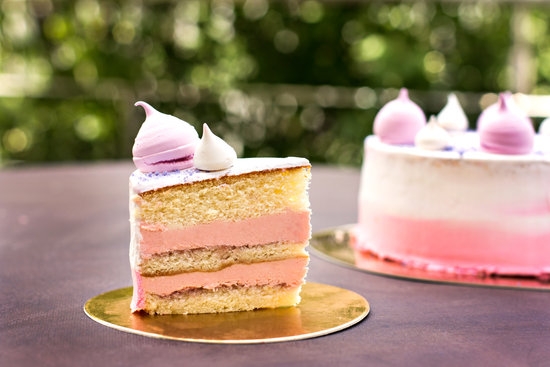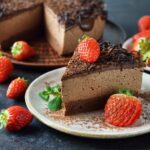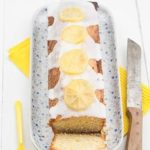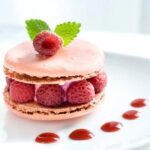Decorating a cake with flowers can elevate its beauty and add an elegant touch to any celebration. From weddings to birthdays, flowers have always been a popular choice for adorning cakes, bringing a natural charm and vibrancy to dessert tables. But what flowers can be used to decorate a cake? In this article, we explore the different types of flowers that are safe and suitable for decorating cakes, whether they are edible or non-edible.
When it comes to adorning cakes with flowers, there are various options to choose from depending on personal preference and the occasion. Edible flowers are a popular choice for those looking to incorporate floral elements into their desserts without any concerns about safety.
From delicate pansies to vibrant roses, edible flowers not only look stunning but also add a subtle flavor profile to the cake. Additionally, non-edible flowers such as roses, ranunculus, or orchids can be used as long as they are safely prepared and placed on cakes.
Fresh flowers offer a beautiful and fragrant option for decorating cakes, adding a touch of nature’s beauty to the dessert. However, it is crucial to take precautions when using fresh flowers on cakes to avoid any contamination. On the other hand, sugar flowers provide a long-lasting and customizable alternative for cake decoration. With intricate designs and vibrant colors, sugar flowers can be crafted in advance and stored for future use on various occasions.
Edible Flowers
When using edible flowers to decorate cakes, it is essential to ensure that they are safe for consumption. Make sure to source your edible flowers from reputable suppliers or farmers markets to avoid any potential contamination or adverse reactions. Before placing the flowers on your cake, thoroughly wash and dry them to remove any dirt or pests that may be present. Additionally, consider organically grown flowers that have not been treated with chemicals.
To incorporate edible flowers into your cake decorations, you can simply place them on top of frosted cakes or gently press them into the icing. You can also crystallize the flowers by brushing them with egg whites and sprinkling them with sugar to create an elegant and sweet embellishment for your cakes.
Whether you choose to use fresh petals or whole blooms, edible flowers offer a versatile and charming way to adorn your baked goods while adding a touch of nature’s beauty.
| Edible Flower | Description |
|---|---|
| Roses | Adds a delicate floral taste and romantic aesthetic |
| Violets | Provides a hint of sweetness and vibrant color |
| Lavender | Ideal for adding a soothing aroma and flavor profile |
Non-Edible Flowers
When it comes to decorating cakes, non-edible flowers are another popular option that can add a touch of elegance and beauty. While these flowers may not be safe for consumption, they can still enhance the visual appeal of a cake and create stunning decorations. Some common non-edible flowers used for cake decoration include roses, lilies, orchids, and carnations. These flowers come in a variety of colors and shapes, allowing for endless possibilities when it comes to decorating cakes.
Using non-edible flowers on cakes requires special care to ensure that they do not contaminate the cake or pose any health risks. It is important to make sure that the stems of the flowers do not come into direct contact with the cake itself, as many flowers are treated with pesticides or other chemicals that are not safe for consumption.
One way to safely use non-edible flowers on cakes is to place a barrier between the flowers and the cake, such as a piece of parchment paper or a small plastic insert.
To decorate a cake with non-edible flowers, you can carefully select individual blooms or create beautiful floral arrangements using different types of flowers. These decorations can be placed on top of the cake or cascaded down the sides for a more dramatic effect. Non-edible flowers can also be combined with other edible decorations like sugar flowers or buttercream designs to create a unique and eye-catching look for any special occasion cake.
Fresh Flowers
Using fresh flowers to decorate cakes can elevate the overall aesthetic and bring a touch of natural beauty to your dessert. Whether you are looking to create a whimsical garden-inspired cake or a more elegant design, fresh flowers can be the perfect choice for decoration. It is essential, however, to ensure that the flowers you choose are safe for consumption and have not been treated with any harmful chemicals.
When selecting fresh flowers for cake decoration, opt for organic blooms that are pesticide-free and edible. Some popular options for edible fresh flowers that can be used to decorate cakes include roses, pansies, violets, lavender, and calendula. Not only do these flowers add a pop of color to your cake, but they also offer subtle flavors that can complement the overall taste of the dessert.
To safely use fresh flowers on cakes, follow these tips:
- Thoroughly wash the flowers before placing them on the cake
- Remove any stamens, pistils, or other non-edible parts of the flower
- Place a barrier between the flowers and the cake to prevent direct contact
Remember that not all flowers are safe for consumption, so it is crucial to do your research or consult with a florist or knowledgeable professional before incorporating fresh blooms into your cake design. With proper precautions and careful selection, using fresh flowers can add a beautiful and unique touch to your cakes.
Sugar Flowers
Making sugar flowers may seem like a daunting task, but with practice and patience, anyone can master the art of creating these beautiful decorations. Here is a simple step-by-step guide on how to make sugar flowers for cake decoration:
- Gather the necessary tools and materials such as gum paste, floral wire, edible glue, flower cutters, and petal dust.
- Knead the gum paste until it is pliable and roll it out thinly using a rolling pin.
- Use flower cutters to cut out petals of different shapes and sizes.
- Thin out the edges of each petal using a ball tool to create a more realistic look.
- Assemble the petals one by one, attaching them with edible glue onto floral wire to form a complete flower.
- Allow the sugar flower to dry completely before dusting with petal dust for added color and dimension.
By following these steps, you can create stunning sugar flowers to elevate your cakes to new heights of beauty and sophistication. Whether you choose simple blossoms or elaborate floral arrangements, sugar flowers are sure to impress your guests and add a touch of elegance to any celebration.
Buttercream Flowers
Overview of Buttercream Flowers
Buttercream flowers are created using buttercream frosting, which is a mixture of butter, confectioners’ sugar, and flavorings. This frosting can be colored and piped into various flower shapes using different piping tips. From roses to daisies to sunflowers, there is a wide range of buttercream flowers that can be crafted to suit different cake designs and themes.
Tutorial on How to Pipe Buttercream Flowers Onto Cakes
To create buttercream flowers, you will need piping bags, various piping tips (such as petal tips, leaf tips, and round tips), and tinted buttercream frosting. Start by securing your desired piping tip in a piping bag filled with the colored buttercream. Practice piping the different flower shapes on parchment paper before transferring them onto your cake.
Begin with the base petals and gradually add layers to build dimension until your flower is complete. Experiment with different techniques and colors to personalize your buttercream flowers for a stunning cake decoration.
Whether you’re a beginner or experienced baker, mastering the art of piping buttercream flowers can take your cake decorating skills to the next level. The key is practice, patience, and creativity when crafting these intricate floral designs that will impress any guest or recipient. So next time you’re wondering what flowers can be used to decorate a cake, consider trying your hand at creating beautiful buttercream flowers for a truly memorable dessert centerpiece.
Preserved Flowers
One of the advantages of using preserved flowers on cakes is that they require minimal care and attention. Unlike fresh flowers that may wilt or dry out quickly, preserved flowers can last for months or even years if stored properly. This makes them a convenient choice for cake decorators who want to prepare in advance or need flowers that will not perish during transportation.
When using preserved flowers to decorate a cake, it is essential to ensure that they are food-safe and free from any harmful chemicals. Before placing preserved flowers on a cake, it is recommended to gently dust off any excess particles or dirt that may have accumulated during the preservation process. Additionally, store-bought preserved flowers should be inspected carefully to guarantee their quality and safety for consumption.
| Preserved Flowers | Advantages |
|---|---|
| Roses | Last longer than fresh ones |
| Hydrangeas | Retain natural appearance |
| Baby’s Breath | Convenient for advance preparation |
Safety Precautions
When it comes to decorating cakes with flowers, safety should always be a top priority. Whether using edible, non-edible, fresh, sugar, buttercream, or preserved flowers, there are essential precautions to consider to ensure the cake is safe for consumption. One key aspect to pay attention to is choosing flowers that are free from pesticides or other harmful chemicals if they are going to come in direct contact with the cake.
In addition to selecting the right kind of flowers, it’s crucial to properly clean and prepare them before using them as decorations. For fresh flowers, make sure they are thoroughly washed and free from any dirt or insects. Remove any parts that may have been sprayed with pesticides and avoid using toxic varieties. Sugar and buttercream flowers should be made in a clean environment with tools that have been sanitized to prevent any contamination.
Another important safety consideration when decorating cakes with flowers is ensuring that those with allergies or sensitivities are aware of the ingredients used in the decorations. Clearly label cakes that have flowers on them and disclose which types of flowers were used in case someone has an adverse reaction. By taking these safety precautions, you can create stunning floral cake designs while keeping everyone who enjoys them safe and sound.
Conclusion
In conclusion, when it comes to decorating cakes with flowers, there is a wide array of options to choose from depending on your preferences and the occasion. Edible flowers such as roses, violets, and pansies offer not only a beautiful aesthetic but also a subtle flavor that can enhance the overall taste of the cake. It is vital to ensure that you only use flowers that are safe to consume and have not been treated with chemicals.
Non-edible flowers like orchids, lilies, and carnations provide a striking visual appeal to cakes but should never come in direct contact with the cake itself due to potential contamination issues. Fresh flowers bring a natural freshness and fragrance to your cake decorations, but it is essential to take precautions by creating a barrier between the blooms and the cake surface. Sugar flowers offer durability and intricate detailing, perfect for elaborate designs that need to last longer than fresh blooms.
When choosing the right flowers for cake decoration, consider factors such as color scheme, theme, and personal taste. Whether you opt for edible blooms, non-edible florals, fresh blossoms, sugar creations, buttercream designs, or preserved decorations – each type of flower brings its unique charm to elevate your cake presentation.
Remember always to prioritize safety when incorporating flowers into your cake decorating process and enjoy the creative journey of turning a simple dessert into an edible masterpiece adorned with nature’s beauty.
Frequently Asked Questions
What Flowers Are Safe to Put on Cakes?
Not all flowers are safe to put on cakes, as some can be toxic and harmful if ingested. It is important to use only edible flowers that are free from pesticides and chemicals to ensure the safety of those consuming the cake.
What Flowers Are Edible to Decorate a Cake?
There are several types of edible flowers that can be used to decorate a cake, such as roses, violets, lavender, chamomile, and pansies. These flowers not only add a visually appealing touch to the cake but also provide a delicate flavor that complements the sweetness of the dessert.
Can You Put Any Fresh Flowers on a Cake?
While it may be tempting to adorn a cake with any fresh flower available, it is crucial to exercise caution when choosing which flowers to use. Only certain flowers are safe for consumption and should be sourced from reputable sources to ensure they have not been treated with harmful substances.
It is always best to err on the side of caution and do proper research before placing any fresh flowers on a cake.

Welcome to our cake decorating blog! My name is Destiny Flores, and I am the proud owner of a cake decorating business named Cake Karma. Our mission is to provide delicious, beautiful cakes for all occasions. We specialize in creating custom cakes that are tailored specifically to each customer’s individual needs and tastes.





